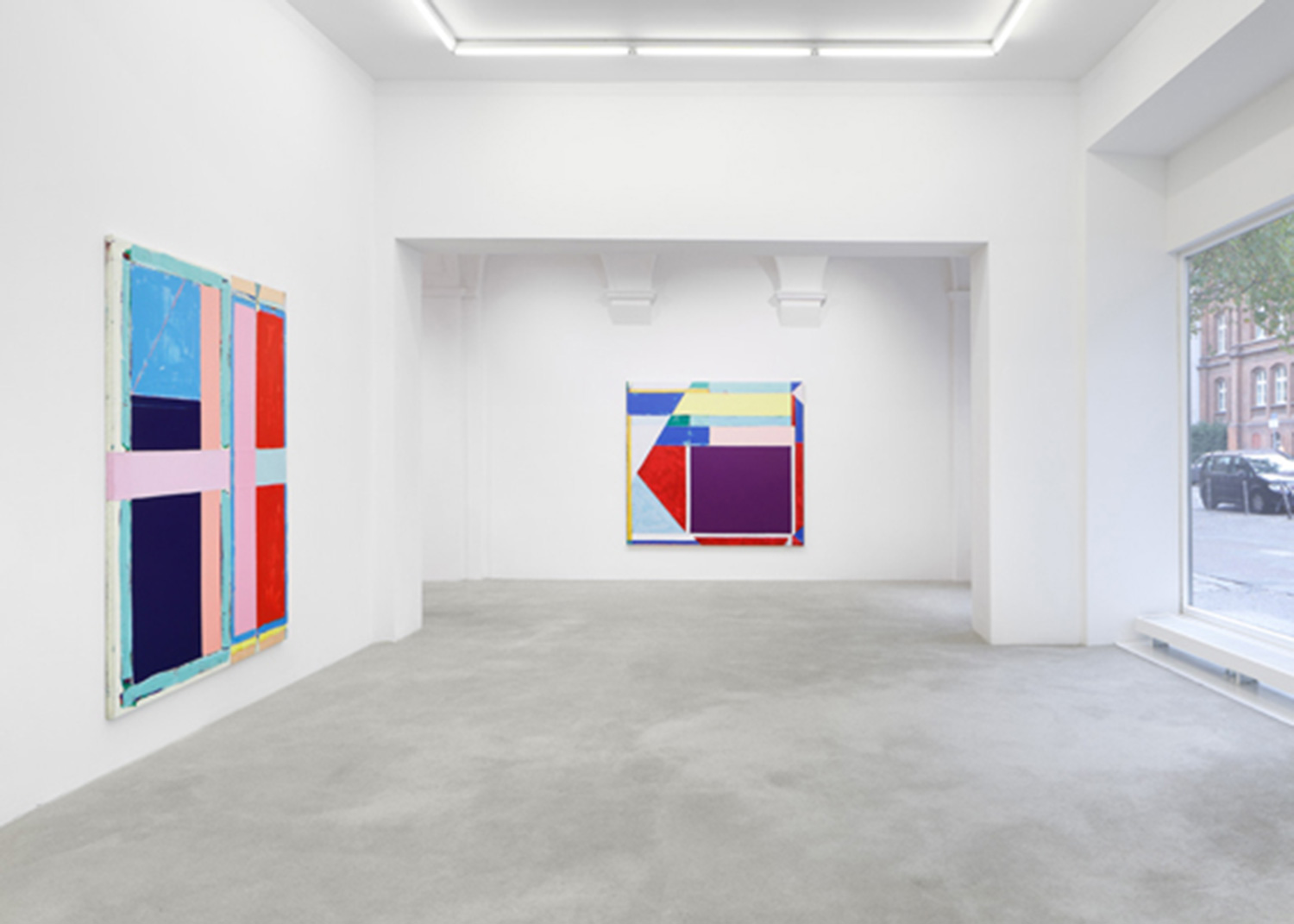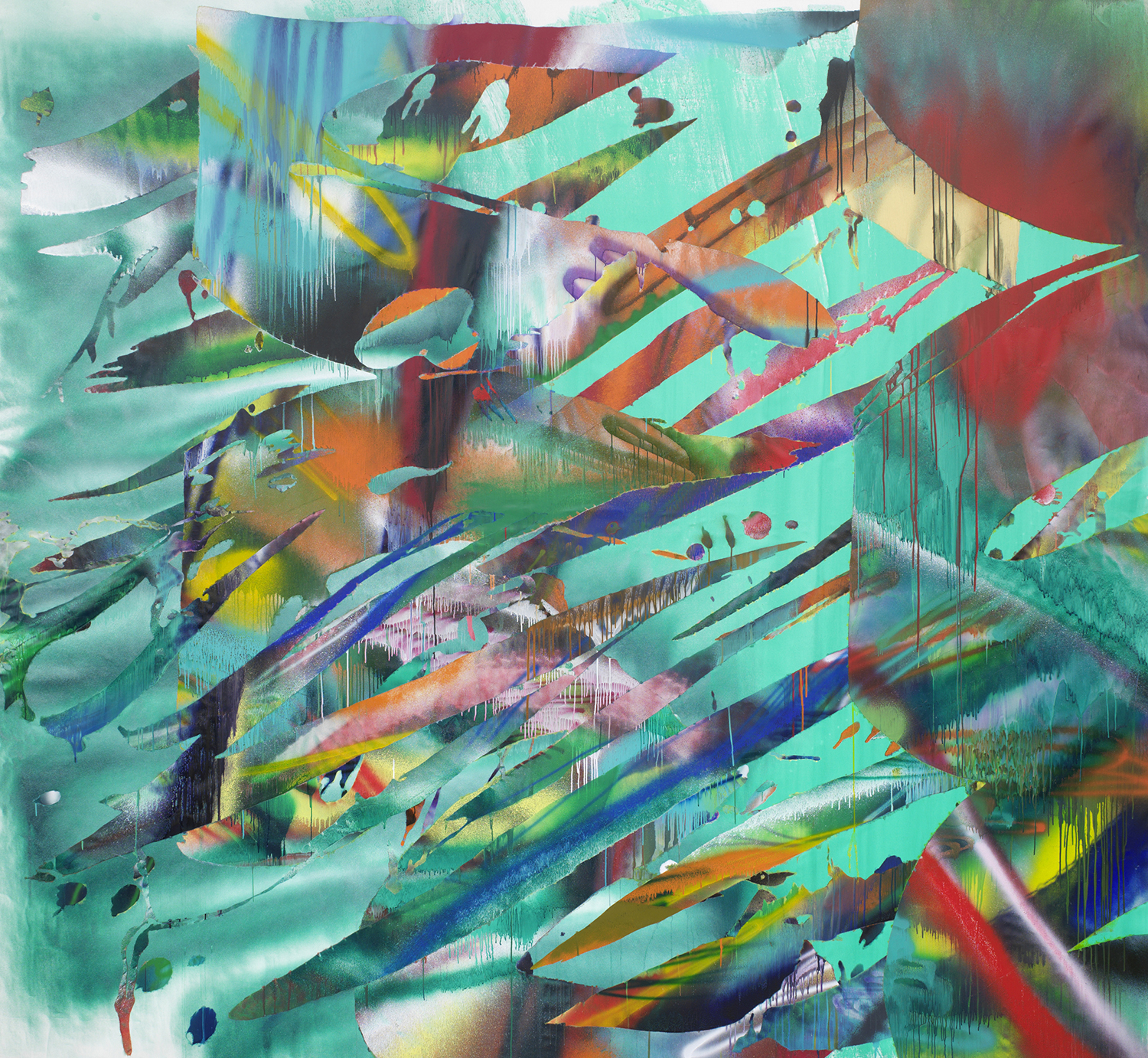Figurative and abstract sculpture, along with painting, were among the casualties of early conceptual art’s tabula rasa. Bruce McLean’s early work aggressively deconstructed the assumptions upon which such traditional art forms were based. But a decade later, McLean adopted painting as his primary medium. Viewed against the commercial expansion of the contemporary art market in the 1980s, the reversal had a mercenary look about it, just as the decision of Barry Flanagan — a peer of McLean’s from the generation of British artists who emerged in the 1960s — to reject his early Celtic minimalism and begin producing bronze sculptures of leaping and cavorting hares seemed at least partially motivated by a desire to get serious in financial terms. Two of those hares are silkscreened onto the single painting in this exhibition, The generation game of sculpture, a cuddly toy, a …no I’ve said that (2010) — a large canvas hanging from wires like a cinema projection screen, and faced by four “viewing” benches. In the painting, the hares share a stage with other cartoonish sculptural forms. The composition obliquely references McLean’s early 1970s performances as part of a “pose band” dressed in tuxedos and striking Henry Moore-ish sculptural postures, a vaudevillian turn that doubled as a deflating joke on the pretensions of figure sculpture.
In the upstairs gallery, Invisible Sculpture (1969) is an early installation of eight black-and-white life-size head portraits of the young McLean assuming the role of the art viewer appreciating an absent sculpture. Both painting and photographic installation, from forty years apart, dramatize the loss of value that had traditionally been assigned to the formal art object. Both meet loss with irony, as though to refute or divert sentiment. The self-aggrandizing gesture, whether in the form of a painterly flourish or a photographic self-portrait, supersedes the self-assertion of a figure sculpture. The tabula rasa has become the blank canvas it originally superseded.



